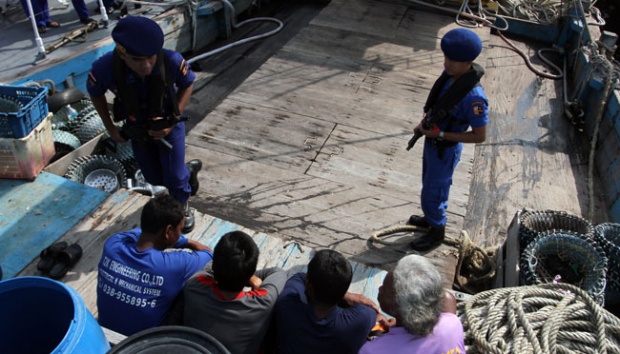TEMPO.CO, Jakarta - Damage to the maritime environment is not only caused by tin or nickel mining, but also by the exploitation of lobster larvae. The government has allowed the resumption of lobster larvae exports on condition that entrepreneurs must cultivate them here or in Vietnam—the main export destination.
This policy immediately raised a question. How can the obligation to cultivate lobsters domestically also allow exports? Entrepreneurs, of course, will seek the easiest way to make money. Rather than investing eight to 12 months in raising lobster larvae, it is better to sell them directly to the destination countries.
There are regulations that set the minimum price of lobster larvae for fishermen, which is lower compared to market prices. Fishermen will definitely choose to sell their larvae to buyers offering higher prices. In this case, illegal exporters.
Illegal exports will continue to thrive because the price of lobster larvae in Vietnam is higher than the domestic price. This is despite the fact that regulations from the Ministry of Marine Affairs and Fisheries aim to curb the illegal export of lobsters and their larvae because the country does not receive non-tax state revenue from this commodity.
The problem is, illegal exporters still make a profit even if they buy larvae at a higher price than the government’s purchase price. With advanced aquaculture industries and technology there, Vietnamese entrepreneurs can sell mature lobsters to China at much higher prices. Therefore, by buying larvae at a higher price than the Indonesian government’s price, they still make substantial profits.
The Maritime Affairs Minister regulation also reduces the size of lobsters that can be exported and increase the types of lobsters compared to previous regulations. As a result, there will be even more massive exploitation of maritime resources. Instead of promoting downstream industries and protecting fishermen, this new policy from the Ministry of Maritime Affairs only creates the potential for damage to Indonesia’s marine environment.
Moreover, companies that will be involved also have hazy track records. In addition to their unclear appointment process, the backgrounds of companies ready to implement the new regulations are vague. Therefore, the reopening of lobster exports is nothing more than a subterfuge to allow for corruption disguised as downstreaming lobster industry.
Who are the players? What are the impacts of the new regulations on our maritime resources? We discuss this in this week’s cover story. In this edition, we also delve into the issue of how professors publish scientific studies in journals in violation of procedures and the widespread trade in videos of animal abuse.
Enjoy the magazine.
Bagja Hidayat
Deputy Chief Editor
Cover Story
The Return of Lobster Export
Minister of Marinee Affairs and Fisheries Sakti Wahyu Trenggono reopens the gates to lobster larvae exports under the guise of a cultivation scheme.
Lobster Larvae Trade Mechanism
The government appointed a number of public service agencies to facilitate the trade of lobster larvae. They may end up becoming middlemen that will harm fishermen.
Concern over Lobster Larvae Cultivation
The regulation on lobster larvae export causes anxiety among breeders. It is believed that cultivation is only a disguise to open export.
The Beauty Industry’s Business Marathon
The local beauty industry is thriving amid the bankruptcy of several global brands. It gains support from social media to contract manufacturers.
Horrifying Monkey Torture Videos
Over the last three years, the police arrested producers of videos depicting the torture of baby monkeys. Their networks spread as far as the United States.
You can read more complete report in Tempo Magazine:
Lobster Larvae Trade Mechanism
Concern over Lobster Larvae Cultivation










![Bendera Korea Utara berkibar di samping kawat berduri di kedutaan besar Korea Utara di Kuala Lumpur, Malaysia, 9 Maret 2017. [REUTERS / Edgar Su]](https://statik.tempo.co/data/2021/03/22/id_1008897/1008897_720.jpg)








